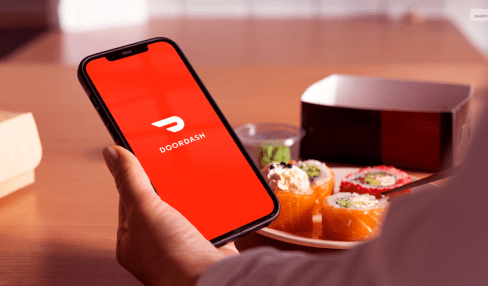5 Best Practices for Implementing an Efficient Interactive Voice Response (IVR) System
5 Mins Read
Published on: 20 March 2023
Last Updated on: 06 September 2024

- What is IVR and What are the Benefits of Using it in Call Centers?
- 5 Best Strategies for Implementing an Efficient IVR System
- Keep your IVR menu simple, short, and easy to navigate
- Make your IVR scripts customer-oriented and user-friendly
- Use wait times to provide relevant information or offer a callback option
- Always include an option to talk to a live agent
- Consistently evaluate your IVR performance and keep it up-to-date
- Final Thoughts
A well-implemented Interactive Voice Response (IVR) system can improve the experience and make things easier for customers calling your support line and your call center agents by empowering callers with self-service options and connecting them to the relevant agents.
A poorly implemented IVR system, on the other side, can damage your brand reputation and lead to customer frustration, lowered satisfaction, and bad CX. Read on to learn the top 5 best strategies for implementing an efficient IVR system at your call center.
What is IVR and What are the Benefits of Using it in Call Centers?
Interactive Voice Response (IVR) is a call center technology – often part of contact center solutions such as VoiceSpin – that allows callers to interact with an automated system through touch-tone keypad inputs or voice responses.
IVR provides pre-recorded voice prompts that guide callers through a series of menu options allowing them to get specific information or perform certain basic actions, like paying a bill, checking their account balance, or making an appointment. It is also used to route incoming calls to the most appropriate departments or specific agents to ensure callers are connected to the right person who can best assist them.
Today’s IVR systems are much more sophisticated than they used to be decades ago when they were used to simply direct incoming calls to relevant departments. By using advanced technologies like speech recognition, natural language processing (NLP), and machine learning algorithms, IVR systems enable efficient self-service support and allow customers to resolve issues on their own, which is highly expected by consumers. In fact, according to Salesforce, 65% of customers prefer self-service for simple matters.
A well-implemented IVR strategy can result in the following benefits:
- Reduced inbound call volume and customer support costs
- Improved efficiency as agents can focus on more complex issues
- Personalized support and enhanced customer experience
- Increased availability, allowing customers to get self-service 24/7
5 Best Strategies for Implementing an Efficient IVR System
Whether you’re just looking to implement an Interactive Voice Response system or already have one in place, following these best practices will help you avoid the most common pitfalls and ensure your IVR meets the needs of your customers and brings value to your business.
Keep your IVR menu simple, short, and easy to navigate
‘Less is more’ is a general rule of thumb when designing your IVR menu. Complicated menu structures and confusing prompts might only frustrate callers instead of improving their experience. An IVR system should be simple, concise, intuitive, and easy to use and navigate. It’s recommended to include no more than 6 primary menu options, with the most frequently selected option listed first. Ideally, your customers should be able to get through the main menu in around 30 seconds or less.
Make your IVR scripts customer-oriented and user-friendly
The goal of an IVR system is to improve the experience for your customers when they reach out to your brand with their questions or issues. This is why your IVR scripts should be designed with your customers in mind and aimed to meet their specific needs and expectations. The IVR scripts should provide clear instructions and use simple, straightforward, and natural language that resonates with your audience. It’s also important to ensure your IVR scripts go in line with your brand’s tone of voice.
Use wait times to provide relevant information or offer a callback option
No one likes to stay on hold waiting to be connected to an agent, but you can make this time less frustrating for callers. While customers are waiting on hold, instead of simply playing music, your IVR system can play messages that provide updates on the status of their call, estimated wait times, or other relevant information. That could include short promotions of new products or services, discounts, special offers, etc.
If your team typically handles large inbound call volumes – which also means longer wait times – it also makes sense to add a callback option. That will show your customers that you value their time by allowing them to request a callback rather than waiting on hold in long call queues.
Always include an option to talk to a live agent
One of the biggest frustrations for customers with IVR systems is being unable to get through to a live person. Even though an IVR system can help customers handle many basic issues by themselves, there will always be situations when they need to speak with a customer service agent. One survey found that 60% of customers prefer to bypass the IVR and get connected to an agent right away.
Make sure there’s always an option to speak to a live person for those customers who can’t get their issues resolved through IVR or simply feel more comfortable talking to your support team instead of interacting with an automated system.
Consistently evaluate your IVR performance and keep it up-to-date
Regularly evaluating the performance and efficiency of your IVR system is critical to ensuring it meets the intended purpose and delivers a positive customer experience.
Keep track of your IVR system’s analytics and collect customer feedback to identify where you might need to fine-tune your prompts or re-arrange your IVR menu options to reduce call drops, shorten wait times, and improve customer satisfaction. For example, if you find that a significant number of callers hang up at some point, you might consider shortening your menu options.
You can also add a short CSAT survey at the end of each call to gauge customer satisfaction and get some additional insights on how you can improve your self-service IVR. Besides, it’s important to always keep your IVR database fresh and up-to-date to reflect any changes in your business.
Final Thoughts
A well-thought-out IVR system can be a great addition to your self-service offerings. By following these best practices, you can design and implement an IVR system that would significantly enhance customer experience, improve agent efficiency, and help you reduce call center operational costs.
Additional:


















Comments Are Closed For This Article